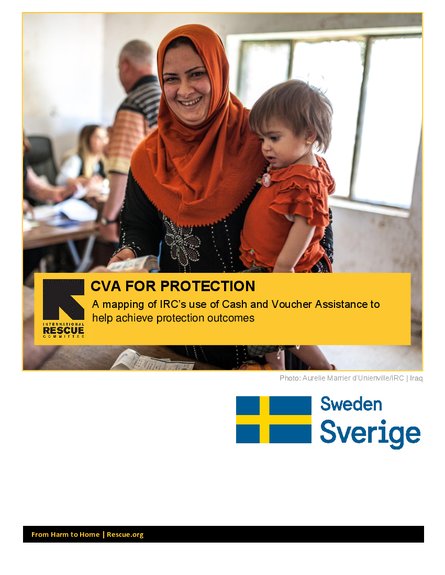
Cash and voucher assistance (CVA) is one of the fastest growing evidence-based interventions in the humanitarian community. While CVA is a well-established tool for food security and basic needs outcome areas, there has been a growing call in recent years to explore the uses of cash across sectors to help achieve a range of humanitarian outcomes. Across humanitarian organisations, work is already underway in different sectors to start incorporating CVA into programs. However, apart from large-scale studies, we often do not see all the ways in which this is happening on the ground. As the evidence base for the use of cash across outcomes continues to develop, it is crucial that humanitarian practitioners document and share their experiences using CVA in order to identify best practices and areas for further research.
The brief is a first step in documenting the various ways in which the International Rescue Committee is using CVA to help achieve protection outcomes. The IRC first developed its Cash Strategy in 2015 with a commitment to increase the proportion of humanitarian aid delivered through CVA. To meet this goal, the Cash Strategy calls for ensuring the uptake and delivery of cash across IRC’s key strategic outcome areas: safety, health, education, economic well-being, and power. In line with the IRC’s “Cash First” approach, IRC has prioritised using CVA for outcome areas where it will strengthen program delivery. This is best demonstrated in IRC’s protection programs, which have been early adopters of cash due to its flexibility to support individually-tailored responses to restore dignity and build the resilience of individuals.
IRC’s commitment to outcome-driven programming has continued to advance the innovative use of cash to help achieve protection outcomes in the contexts in which we operate. The brief, jointly developed by IRC protection and cash teams, highlights examples of where, and how, the IRC is currently using CVA to help achieve protection outcomes. By showcasing these examples, we seek to further promote the use of CVA to achieve protection outcomes by supporting learning across contexts, advancing promising practices and identifying areas for further research and learning.
